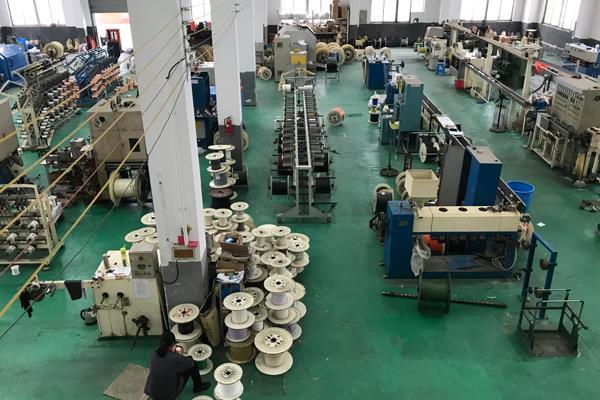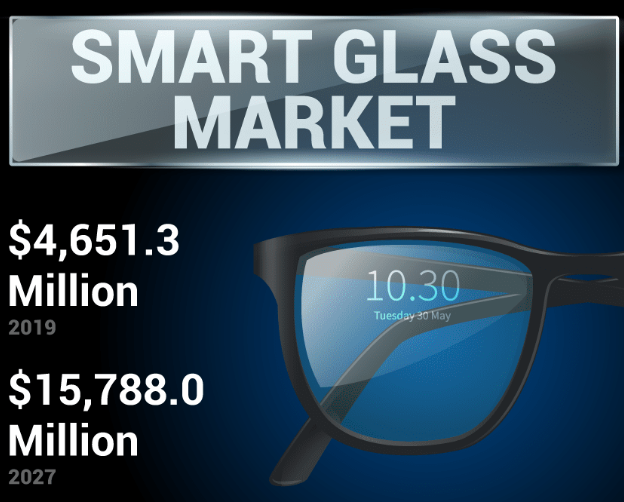The global nanocellulose market size is anticipated to showcase potential growth owing to the increasing concerns regarding the sustainability of the packaging industry, observes Fortune Business Insights™ in its report, Nanocellulose has applications in various industries including cement and composites, textile, and paper and packaging. The market stood at USD 291.53 million in 2019 and is projected to reach USD 1,053.09 million by 2027 at a CAGR of 19.9% in the forecast period.
Information Source -
https://www.fortunebusinessinsights.com/nanocellulose-market-104565
Highlights of the Report:
While making the report, we segmented the market on the basis of product, type, consumption, distribution channel, and region. Based on the segmentation, we made a list of companies and conducted a detailed analysis of their financial positions, product portfolios, and growth strategies. Our next step included the study of core competencies of key players and their market share to anticipate the degree of competition. The bottom-up procedure was conducted to arrive at the overall size of the market.
Drivers & Restraints-
Increasing Applications in Packaging Industry to Drive Growth
Rising concerns regarding the impact of material used by the packaging industry on the environment are estimated to drive nanocellulose market growth. For instance, according to the U.S. Environmental Protection Agency, packaging material accounts for around 28.1% of the total municipal solid waste in the U.S. and the material used in packaging includes plastic, which is non-degradable. In addition, the extensive utilization of nano cellulose in the textile industry is projected to further strengthen its demand. However, the high cost of production associated with the product is expected to limit the growth of nanocellulose.
Segment-
Paper and Packaging to Be the Fastest-growing Segment
Based on the application, paper and packaging is estimated to be the fastest-growing segment with a market share of 23.0% in 2019. Increasing the utilization of cellulose nanocrystals in both paper and plastic-based packaging is driving the segment growth. Additionally, the segment held a share of 22.4% in Germany.
Based on type, the microfibrillated cellulose (MFC) segment is anticipated to hold a considerable nanocellulose market share owing to its applications in the manufacturing of nanocomposites, bio-based medical products, wood adhesives, super-capacitors, batteries, continuous fibers for textiles, and other products.
Regional Insights-
High Availability of Wood in Eastern Europe to Help the Region Dominate
Europe is projected to dominate the global market with a value of USD 108.77 million in 2019. Its dominance is attributed to the high concentration of manufacturers in the region owing to the rising availability of wood in the Eastern Europe. In addition, the region is a manufacturing hub of automobiles, textiles, and cosmetics, which is estimated to further drive the growth of nanocellulose.
The market in Asia Pacific is not far behind as it is set to exhibit substantial growth in the forecast timeline with a value of USD 43.16 million in 2019. The presence of end-use industries, such as food, cement, textiles, and paper in China, South Korea, and India is anticipated to propel the demand for nanocellulose, driving its growth in the region.
Competitive Landscape-
Research & Development to Aid Key Players Develop Innovative Products
Key players operating in the global market are investing extensively in research and development in order to develop innovative products based on nanocellulose and upgrade the existing ones. This will help them gain prominence over other companies. For instance, in December 2020, Norske Skog announced the development of a new variant of CEBINA by replacing the suspension liquid with polymer instead of water. This enabled the use of CEBINA in epoxy floor coverings and adhesives.
Industry Developments-
In April 2020, Celluforce announced that Celluforce NCC, a gelling agent produced by the company, is suitable for the manufacturing of hydro-alcoholic gels, thereby replacing the traditionally used acrylates and carbomers. This makes the agent suitable in making gel-based sanitizers while providing an invisible layer of cellulose on hands for protecting damaged skin.
In February 2020: GranBio Technologies, a subsidiary of GranBio, signed a supply partnership with Birla Carbon, an Indian company. Under this agreement, Birla Carbon will supply biomass-based nanocellulose for the replacement of carbon black, an oil by-product used in the tire & rubber industry.
A List of Key Manufacturers Operating in the Market:
Fiberlean Technologies (UK)
Kruger, Inc. (Canada)
Borregard (Norway)
Nippon Paper Group (Japan)
Celluforce (Canada)
Stora Enso (Finland)
Norske Skog ASA (Norway)
The University of Maine (U.S.)
Research Institutes of Sweden (RISE) (Sweden)
GranBio (Brazil)
CelluComp (UK)
Other Key Players
The global nanocellulose market size is anticipated to showcase potential growth owing to the increasing concerns regarding the sustainability of the packaging industry, observes Fortune Business Insights™ in its report, Nanocellulose has applications in various industries including cement and composites, textile, and paper and packaging. The market stood at USD 291.53 million in 2019 and is projected to reach USD 1,053.09 million by 2027 at a CAGR of 19.9% in the forecast period.
Information Source - https://www.fortunebusinessinsights.com/nanocellulose-market-104565
Highlights of the Report:
While making the report, we segmented the market on the basis of product, type, consumption, distribution channel, and region. Based on the segmentation, we made a list of companies and conducted a detailed analysis of their financial positions, product portfolios, and growth strategies. Our next step included the study of core competencies of key players and their market share to anticipate the degree of competition. The bottom-up procedure was conducted to arrive at the overall size of the market.
Drivers & Restraints-
Increasing Applications in Packaging Industry to Drive Growth
Rising concerns regarding the impact of material used by the packaging industry on the environment are estimated to drive nanocellulose market growth. For instance, according to the U.S. Environmental Protection Agency, packaging material accounts for around 28.1% of the total municipal solid waste in the U.S. and the material used in packaging includes plastic, which is non-degradable. In addition, the extensive utilization of nano cellulose in the textile industry is projected to further strengthen its demand. However, the high cost of production associated with the product is expected to limit the growth of nanocellulose.
Segment-
Paper and Packaging to Be the Fastest-growing Segment
Based on the application, paper and packaging is estimated to be the fastest-growing segment with a market share of 23.0% in 2019. Increasing the utilization of cellulose nanocrystals in both paper and plastic-based packaging is driving the segment growth. Additionally, the segment held a share of 22.4% in Germany.
Based on type, the microfibrillated cellulose (MFC) segment is anticipated to hold a considerable nanocellulose market share owing to its applications in the manufacturing of nanocomposites, bio-based medical products, wood adhesives, super-capacitors, batteries, continuous fibers for textiles, and other products.
Regional Insights-
High Availability of Wood in Eastern Europe to Help the Region Dominate
Europe is projected to dominate the global market with a value of USD 108.77 million in 2019. Its dominance is attributed to the high concentration of manufacturers in the region owing to the rising availability of wood in the Eastern Europe. In addition, the region is a manufacturing hub of automobiles, textiles, and cosmetics, which is estimated to further drive the growth of nanocellulose.
The market in Asia Pacific is not far behind as it is set to exhibit substantial growth in the forecast timeline with a value of USD 43.16 million in 2019. The presence of end-use industries, such as food, cement, textiles, and paper in China, South Korea, and India is anticipated to propel the demand for nanocellulose, driving its growth in the region.
Competitive Landscape-
Research & Development to Aid Key Players Develop Innovative Products
Key players operating in the global market are investing extensively in research and development in order to develop innovative products based on nanocellulose and upgrade the existing ones. This will help them gain prominence over other companies. For instance, in December 2020, Norske Skog announced the development of a new variant of CEBINA by replacing the suspension liquid with polymer instead of water. This enabled the use of CEBINA in epoxy floor coverings and adhesives.
Industry Developments-
In April 2020, Celluforce announced that Celluforce NCC, a gelling agent produced by the company, is suitable for the manufacturing of hydro-alcoholic gels, thereby replacing the traditionally used acrylates and carbomers. This makes the agent suitable in making gel-based sanitizers while providing an invisible layer of cellulose on hands for protecting damaged skin.
In February 2020: GranBio Technologies, a subsidiary of GranBio, signed a supply partnership with Birla Carbon, an Indian company. Under this agreement, Birla Carbon will supply biomass-based nanocellulose for the replacement of carbon black, an oil by-product used in the tire & rubber industry.
A List of Key Manufacturers Operating in the Market:
Fiberlean Technologies (UK)
Kruger, Inc. (Canada)
Borregard (Norway)
Nippon Paper Group (Japan)
Celluforce (Canada)
Stora Enso (Finland)
Norske Skog ASA (Norway)
The University of Maine (U.S.)
Research Institutes of Sweden (RISE) (Sweden)
GranBio (Brazil)
CelluComp (UK)
Other Key Players




